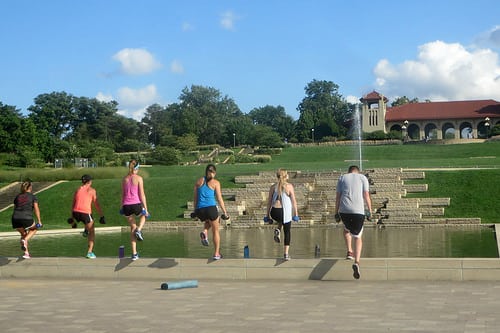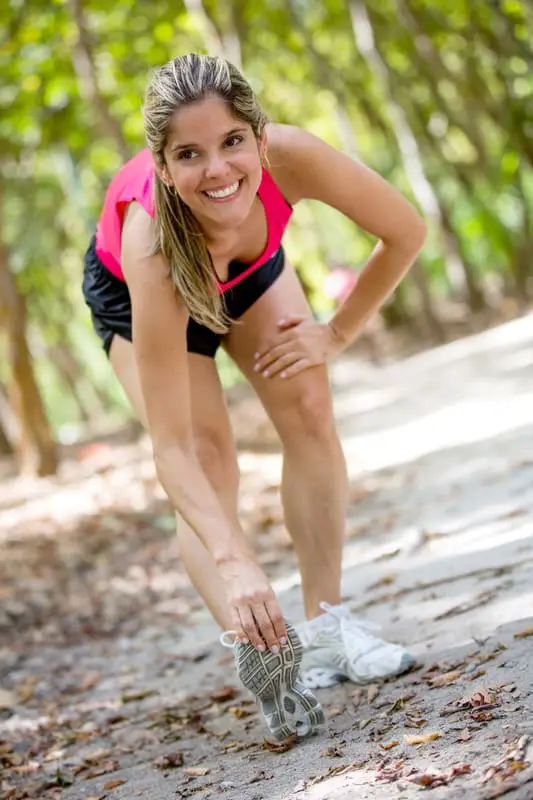Does basic exercise help congestive heart failure? It is important to spend a few minutes warming up and cooling down before and after each activity session to avoid injuring yourself and stressing your heart.
Warming up helps your body and your heart adjust to the increased demands of the activity. It also stretches tendons and muscles to avoid cramping.
Cooling down allows your heart rate, blood pressure, and other body functions to return to their usual resting levels and brings down your adrenaline level gradually. Most of the problems that people  have related to activity occur when they stop the activity suddenly. and do not take the time to cool down slowly and correctly. People with congestive heart failure sometimes have low energy, and they need to proceed with caution.
have related to activity occur when they stop the activity suddenly. and do not take the time to cool down slowly and correctly. People with congestive heart failure sometimes have low energy, and they need to proceed with caution.
- Best Congestive Heart Failure And Exercise Tips You Will Read This Year
Best Congestive Heart Failure And Exercise Tips You Will Read This Year
Warming Up Spend 5 minutes warming up before you begin an activity or exercise program. One of the best warm-up exercises is to do your intended activity very slowly (that is if you are going to walk, walk slowly for the first 5 minutes; if you are going to ride a bike, pedal slowly without resistance for the first 5 minutes).
Some patients with congestive heart failure stretch before they exercise, but you should first discuss this with your healthcare provider, and they will suggest specific stretching exercises for you. These are some of the guidelines for con festive heart failure patients.
Exercise During Heart Failure: Cooling Down
The best way to cool down is to slowly decrease the intensity of the activity or exercise you are doing. For example, if you are walking, walk slowly for the last few minutes of your exercise session.
Never stop exercising suddenly and just sit, lie down, or stand still, unless you feel you have to. It can make you feel dizzy or lightheaded. End your activity program by doing about 5 minutes of stretching exercises.
Exercise During Heart Failure: Tips and Guidelines
- As you build regular activity into your life, consider the following: n Get walking shoes that fit comfortably and have good support.
- Do not exercise on either an empty or a full stomach.
- Avoid activities or exercising outdoors when it is colder than 40°F or warmer than 80°F or on high smog days.
- Always warm-up and cool down with stretching and slow walking.
- Start any activity at a slow and steady pace. n Do not hold your breath when walking, exercising, or doing any kind of physical activity.
- Exercise or do your selected activity at the time of day when you feel most energetic. For most heart failure patients that is the morning.
- The day after you are more active, you may feel more tired than usual. Although this is common, make sure you talk to your health care provider if this tiredness lasts longer than a day.
- Consider being active with a partner. Studies have shown that people stick to their activity program and enjoy it more when they have a partner. n Make sure that you can carry on a conversation while you are doing any activity. If you cannot carry on a conversation, you are exercising too hard and need to slow down.
Conclusion
People with congestive heart failure can live fulfilling lives. As part of the treatment for heart failure, your doctor might suggest ways that you can live a healthier life.
Your doctor may recommend cardiac rehabilitation as part of your treatment plan. In
cardiac rehabilitation, you work with a team of healthcare experts that helps you recover.
These are some evidenced-based Congestive Heart Failure and Exercise Guidelines.
References:
McMurray JJ. Clinical practice. Systolic heart failure. N Engl J Med. 2010 Jan 21;362(3):228–238.[PubMed]
The best way to prevent a stroke is to have good blood pressure.
My name is Phyllis Robinson MSN, RN. I have been a Registered Nurse for 27 years in the Cardiac Intensive Care Unit. I am passionate about cardiac care and heart disease. I also want this blog to be an educational tool that people can refer to for traditional and alternative treatment. I will blog on heart disorders such as high blood pressure, congestive heart failure, cardiomyopathy, and high cholesterol.
I received my Nursing degree from Baltimore Community College.
I went on to receive my Masters in Nursing from Walden University
I have worked for almost 30 years in Critical Care with a focus on heart health. I am an advocate of preventive healthcare.

